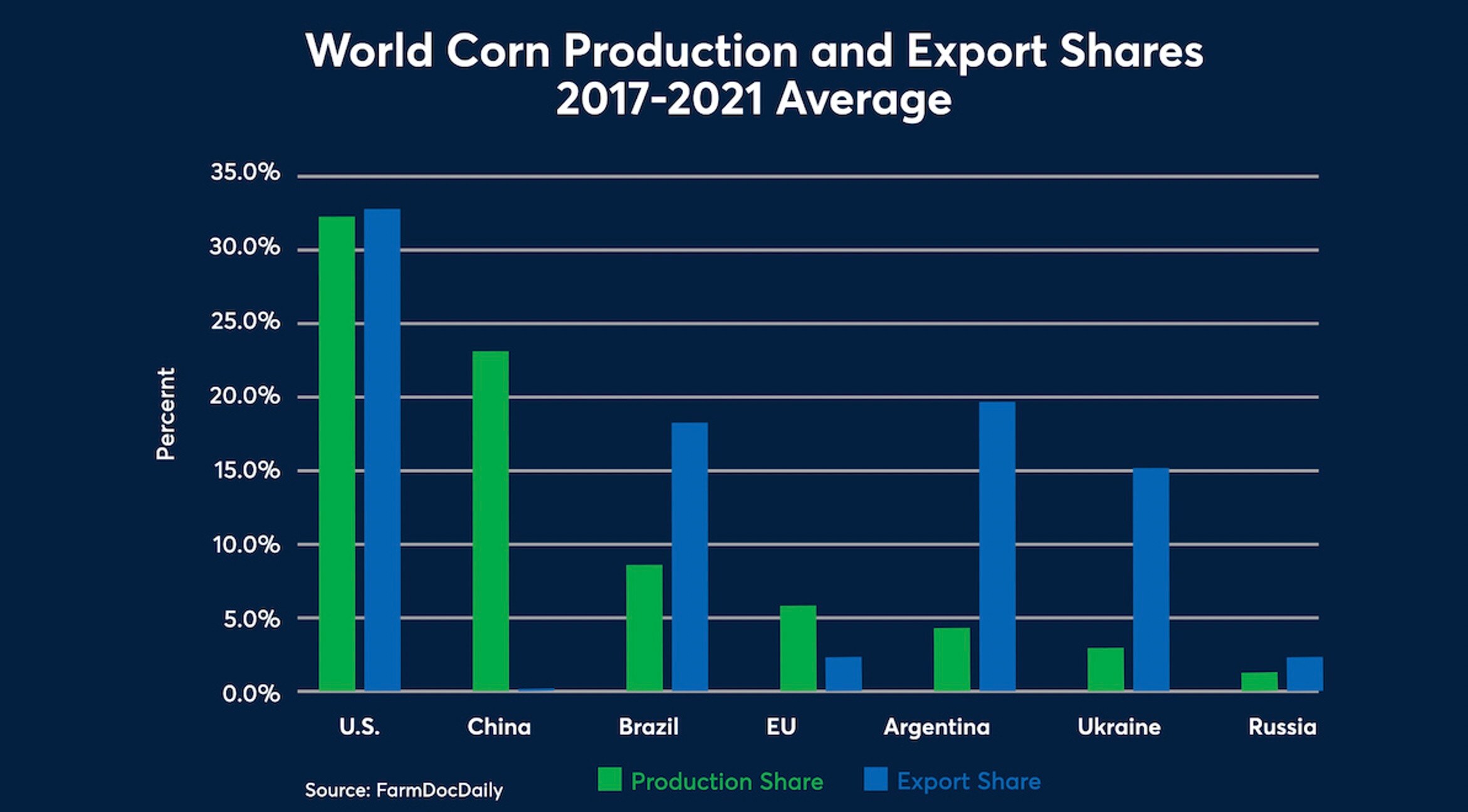This post contains sponsored advertising content. This content is for informational purposes only and not intended to be investing advice.
AT-A-GLANCE
- Short-dated new crop options help farmers manage risk around USDA reports or other market-moving events with a lower premium
- Geopolitical events have introduced new risks for producers in 2022
Grain market participants are used to unpredictability and risk, but 2022 has brought to the forefront a confluence of risks few have seen.
Last year farmers and end-users were beset by several challenges: supply-chain struggles due to the pandemic, high input prices, inflation, plus a dry fall during U.S. winter wheat planting and droughts in Brazil and Argentina’s crop regions. Lackluster global grain harvests prompted some importing countries to secure additional supplies to ensure adequate food reserves.

Scan the above QR code for more expert analysis of market events and trends driving opportunities today!
The war in Ukraine has added a deeper dimension to global food worries. Known as the breadbasket of Europe, the region is responsible for 25% of wheat exports, along with some corn and oilseed exports. A large percentage of global fertilizer supplies originates from the region, too. Energy prices have risen since the invasion.

The conflict has affected Black Sea exports, limiting the supply source that goes to price conscious buyers such as Egypt and the Middle East, says Arlan Suderman, chief commodities economist at StoneX Financial. The loss of supply pushed the U.N. Food Price Index to record levels.
Market volatility has increased substantially, says John Georgy, chief financial officer for Allendale, Inc., pointing out limit and expanded limit moves in both corn and wheat. Even with the high crop prices, the number one concern among his clients is taming higher input costs.
Real Shortages
Doug Kirk of Terra Plana Family Farms, which operates 8,500 acres in central Illinois, says the war has amplified the variety of risks farmers face., including potential input supply shortages such as fertilizer and chemicals.
“I don't like to act like the sky is falling… but in my career, I don't think any of these challenges has been so extreme,” says Kirk, who’s been farming for more than 20 years.
Kirk’s fertilizer needs for 2022 are locked in, but he thinks the crop-input shortage will be most acute in yield enhancement products. His worry is for 2023, even though that’s a year away.
Supply, Demand Outlooks
Corn and soybean prices reached 10-year highs and wheat prices were just off all-time highs in March, so U.S. spring planting season presents both opportunities and risks for farmers, Suderman says. All spring-planted crops will be competing for acres, especially with Ukraine’s spring planting in doubt. Both he and Georgy expect slightly lower corn acres versus last year, with higher soybean and modest increases in wheat acreage.
Suderman says with global stocks snug for all three food crops, importers are stepping up purchases to ensure coverage. India and Australia are currently covering global wheat demand, but he says corn and soybean sales are about twice the normal weekly pace for this time of year.
But with South American soybean supplies tight, there’s already fears supplies might run out ahead of the U.S. fall harvest. The Black Sea situation could bring more urgency to the corn market. “That will tighten up supply in the world market over the coming 12-18 months,” Suderman says.
Managing Risks
Kirk says recent events changed his outlook for 2022. He’s delayed sales targets by a couple of months or reduced the percentages he normally wants to have booked by certain dates. “It's unusual but likely that at harvest we will have very little cash corn or soy sold and instead we will have floors in place with OTCs or options,” he says.

Doug Kirk operates 8,500 acres in central Illinois. “I don't like to act like the sky is falling… but in my career, I don't think any of these challenges has been so extreme.”
Short-dated new crop options are a big part of his risk management approach. Ahead of the March 31 USDA prospective plantings and grain stocks report he added to those positions. “We are using short-dated new crop options to cover the margin risk on some of the marginable options positions we are using in the deferred months,” he says, adding that “there's no way we can grow enough of everything to solve the problem this year.”
Georgy says his clients are also using shorter-dated options, too, especially for corn and soybeans around USDA reports. With so much uncertainty around, option premiums are high leading to more participants utilizing short term options to help reduce cost. Shorter-dated options offer his clients a way to protect bushels by locking in options closer to current prices while using strategies to mitigate margin risk.
“You know exactly what you’re going to spend,” Georgy says, mentioning that the higher volatility makes it worthwhile to put on option trades.
Read more about short-dated new crop options
So far Kirk is sticking with his crop-rotation plan to seed more soybean acres this year, but he’s leaving open the possibility to shift a few more acres to corn, depending how markets react to news.
Short-dated new crop options are giving him flexibility at a time where costs are high and room for error is low. “We are actively managing our cash position at an intensity that we've not had to do for some time. Short-dated options give us insurance against a sudden price change that protects our cash position at a relatively low cost,” Kirk says.
This post contains sponsored advertising content. This content is for informational purposes only and not intended to be investing advice.
© 2025 Benzinga.com. Benzinga does not provide investment advice. All rights reserved.
Trade confidently with insights and alerts from analyst ratings, free reports and breaking news that affects the stocks you care about.